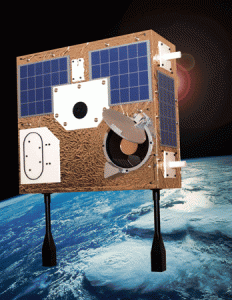When funding for Canada’s MOST (Microvariability and Oscillation of STars) satellite was retracted, Professor of Astronomy Debra Fischer and her team seized the opportunity by purchasing the satellite’s operational rights for two months. From October 10 to December 10, the satellite helped Fischer’s team better understand photospheric signals, ‘noise’ associated with stars’ atmospheres. Fischer said she hopes the data will further the widespread objective in astronomy to make more precise measurements in extrasolar planet (exoplanet) detection.
Since the first planet outside our solar system was detected in 1992, more than 1800 exoplanets have been discovered. Despite this, astronomers have yet to find exoplanets that are true Earth analogs. Fischer said scientists are currently trying to reach the precision necessary for detecting other Earths.
“We use [radial velocity] measurements to try to infer the presence of planets,” Fischer said. “What’s stopping us is that we’re looking at stars that are not just constant, smooth objects – there are velocity flows in the plasma atmosphere of the star. We need to separate that from the orbital velocity of the star.”

Data from the satellite will be used in conjunction with the American (and Yale-built) CHIRON spectrometer and the Swiss HARPS spectrometer, which marks the first time in 20 years that the notoriously competitive teams will collaborate. The satellite examines two stars: the old and less ‘noisy’ Tau Ceti and the younger, more active Epsilon Eridani.
“This little satellite goes around Earth once every 120 minutes, and the whole time, Tau Ceti and Epsilon Eridani are in a continuous viewing zone,” Fischer said. “It’s observing these stars every second.”
